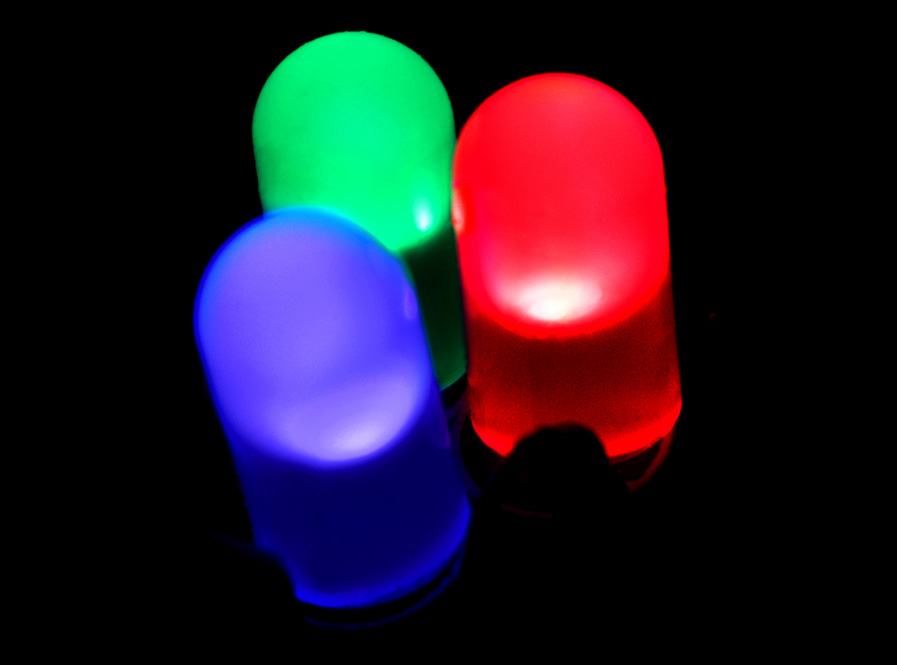LEDs: tiny, wearable, lights
A light-emitting diode (LED) is a semiconductor light source. Because of their small size, they are great for placing in clothes. This was not always the case, though. Early LEDs were low-intensity red diodes. Modern LEDs can be not only red, but also blue and green, and are very bright.

When an LED is turned on, elctrons recombine with electron holes, releasing energy in the form of protons. This is called elocetroluminescence, and the color of the light depends on the protons. LEDs actually provide quite a few advantages over other lights. These include longer lifetimes, low energy consumption, faster switching, smaller size, and improved durability and reliability. Although they can be very expensive, some LEDs are powerful enough to light a whole room.
A newer kind of LED,called a surface mount LED, does not have the small “legs” a normal LED has. It is flatter and easier for circuit boards. Normally, they are soldered down onto the board, but for wearables, small, conductive, beads are put on the ends so that they can sewn onto clothes or fabric with conductive wire. Infared LEDs are also used in remote controls for TV.
In circuits, LEDs are sort of special; electricity can only pass in one direction. Trying to send current the other way will not light up the LED. There are three ways to tell which side is positive and which side is negative. From a view of the top, the plastic part of the LED has a flat side and a rounded side. The rounded side is positive, and the flat side is negative. Inside the LED, there are two small metallic pieces connected to the legs. The bigger piece is negative, the smaller positive. The legs’ lengths are also different. The longer one is positive, the shorter one negative.

Directly above is the schematic for a LED. The plus and minus signs represent positive and negative. The triangle represents the direction in which current should flow. The vertical bar represents the fact that the LED will not light up if current tries to flow in the wrong direction. LEDs are also very picky with voltage. Too little will not turn it on, and too much will burn it.